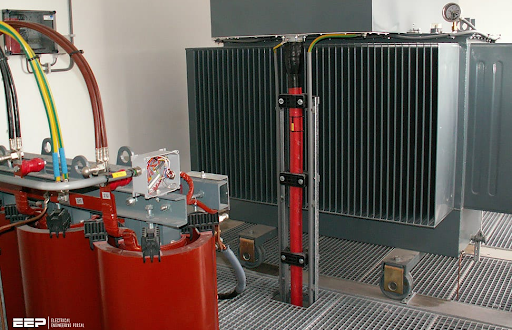Transformers are simple and extremely common electrical devices. They transfer energy between circuits via electromagnetic induction. Transformers of different voltages are used in many applications and devices. Some of them include –
- Facilitate extensive power distribution over large-scale power grids
- Facilitate Power distribution to buildings (by allowing voltage matching)
- Providing high/low voltages for accurate device control
- Impedance matching for audio-related applications
But, if you pick the wrong type of transformer, there’s a high risk of failure. Different devices can handle different amounts of power before overloading. Always check the capacity of your machine (volt-amps) before selecting a transformer. Or else, transient or overvoltage conditions can lead to failures like –
- Buckling of the transformer’s innermost windings
- Spiral tightening
- Displacement of transformers leads
The application also plays a fundamental role in selecting the right transformer. For example, if your application involves sudden load spikes, you’ll have to select a transformer that’s designed to handle that. Here’s are some well-defined methods you should follow to select the right transformer –
The Number of Phases Your Equipment Needs
You’ll have two choices – single-phase or three-phase transformers. Before choosing a transformer, determine whether your equipment operates on a three-phase supply. Most small households use single-phase transformers as they’re sufficient for small devices.
Three-phase transformers are designed to convert three-phase input source voltages to single-phase or three-phase output load voltages. This requirement is typically found in industrial machines. That’s why three-phase transformers are more commonly used in industrial applications.
kVA Rating
Your transformer needs to have a kVA rating greater than (or at least equal to) the load requirement. When you’re shopping for transformers, you’ll see them labeled in units of volt-amperes (VA). Transformers with a 500 VA rating, for instance, can handle 500 volts at one amp of current (ampere).
To determine what kVA rating is suitable for your application, you’ll have to calculate many factors like – the specific current flow required by your electrical load, load voltage of your system, etc. Thankfully modern-day shoppers don’t have to perform these complex calculations.
The leading manufacturers of transformers all supply charts to make this process easy. You just need to know your system’s amperage and voltage. Look for the amperage and voltage details on the chart provided by your manufacturer. The ideal kVA rating will be listed next to those details. Match the ratings and make your pick.
For example, a transformer with a 10.0 kVA rating will handle 1000 volts at 100 amps. Bear in mind most kVA ratings come as whole numbers – 10 kVA, 100 kVA, 1,000 kVA, etc. It’s always safer to select transformers with slightly higher kVA ratings than what your system specifically needs.
Do You Need a Step-Up Transformer or a Step-Down Transformer?
Step-up and step-down transformers have different numbers of primary coil turns, and secondary coil turns. If the number of secondary coil turns divided by the number of primary coil turns is greater than one, you have a step-up transformer.
That’s because the secondary voltage is bigger than the primary voltage. If the ratio is smaller than one, you have a step-down transformer. Determine which type of transformer your system needs before hitting the market.
What are Your Voltage Requirements?
Assess the voltage and the power supply of the equipment/system you’re using. Determine the specific input and output voltage requirements (primary and secondary). Also, assess the voltage amount required by the load. Load voltage is the voltage needed to operate loads (e.g., motors). It should match the output voltage of your transformer.
What is the Frequency of The Equipment and of the Supply Source?
Determine what frequency your transformer should have by assessing the power supply. But first, make sure the frequency of the load and the supply source are the same. For example, most equipment manufactured in the US runs at 60Hz. If your supply source runs at 50Hz, you’ll need to buy two devices – a transformer and a frequency converter.
Attach the frequency converter to your transformer’s output section to avoid failure risks.
Who is Your Seller?
Top sellers of high-quality transformers always help buyers select the right devices that suit their application. The best sellers also provide access to high-quality transformers like the Chint Power Transformer. These types of transformers meet all industry standards and approvals and function well in all temperatures.
 HammBurg Be informed with latest news, reviews, entertainment, lifestyle tips, and much more.
HammBurg Be informed with latest news, reviews, entertainment, lifestyle tips, and much more.




